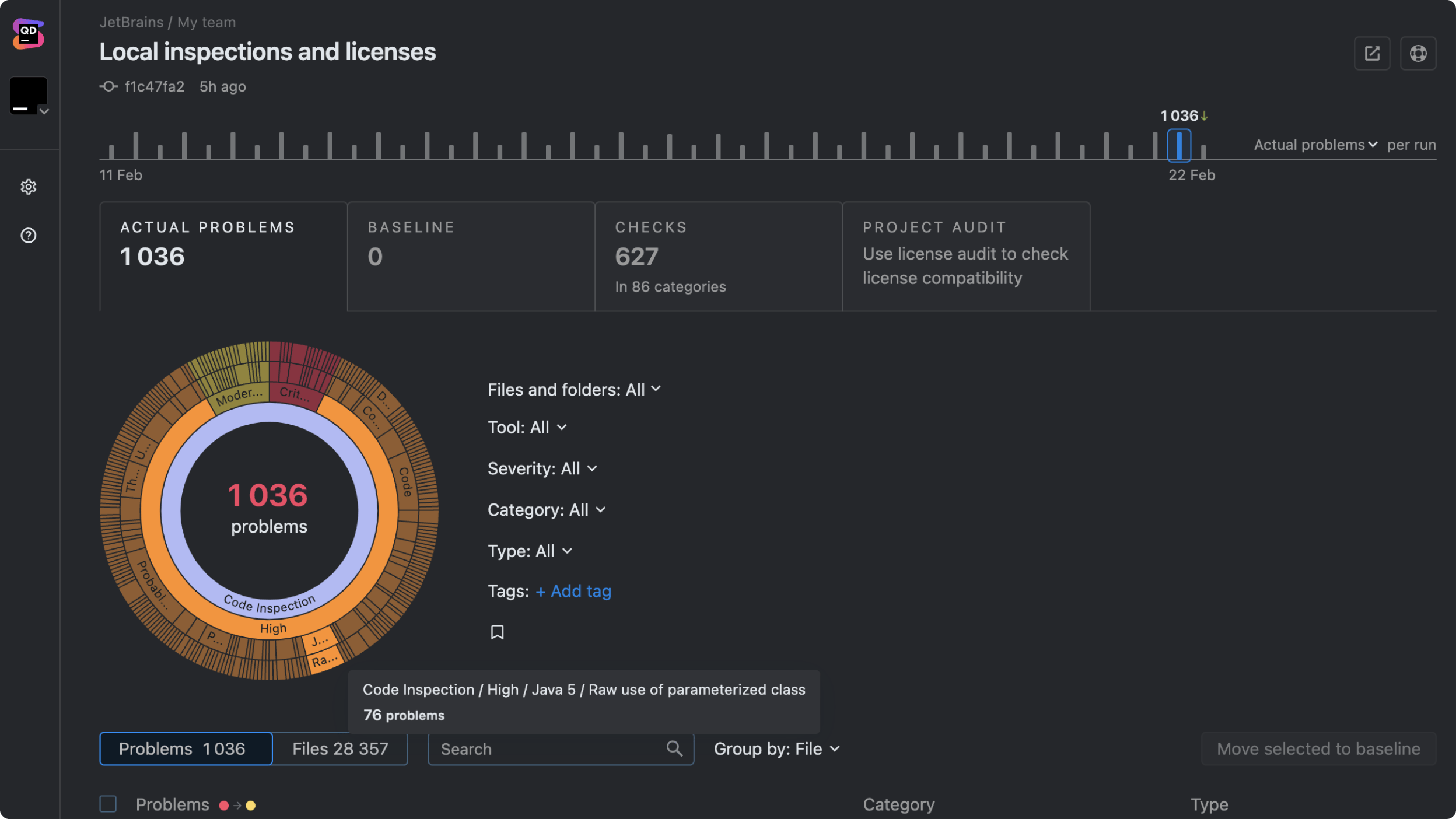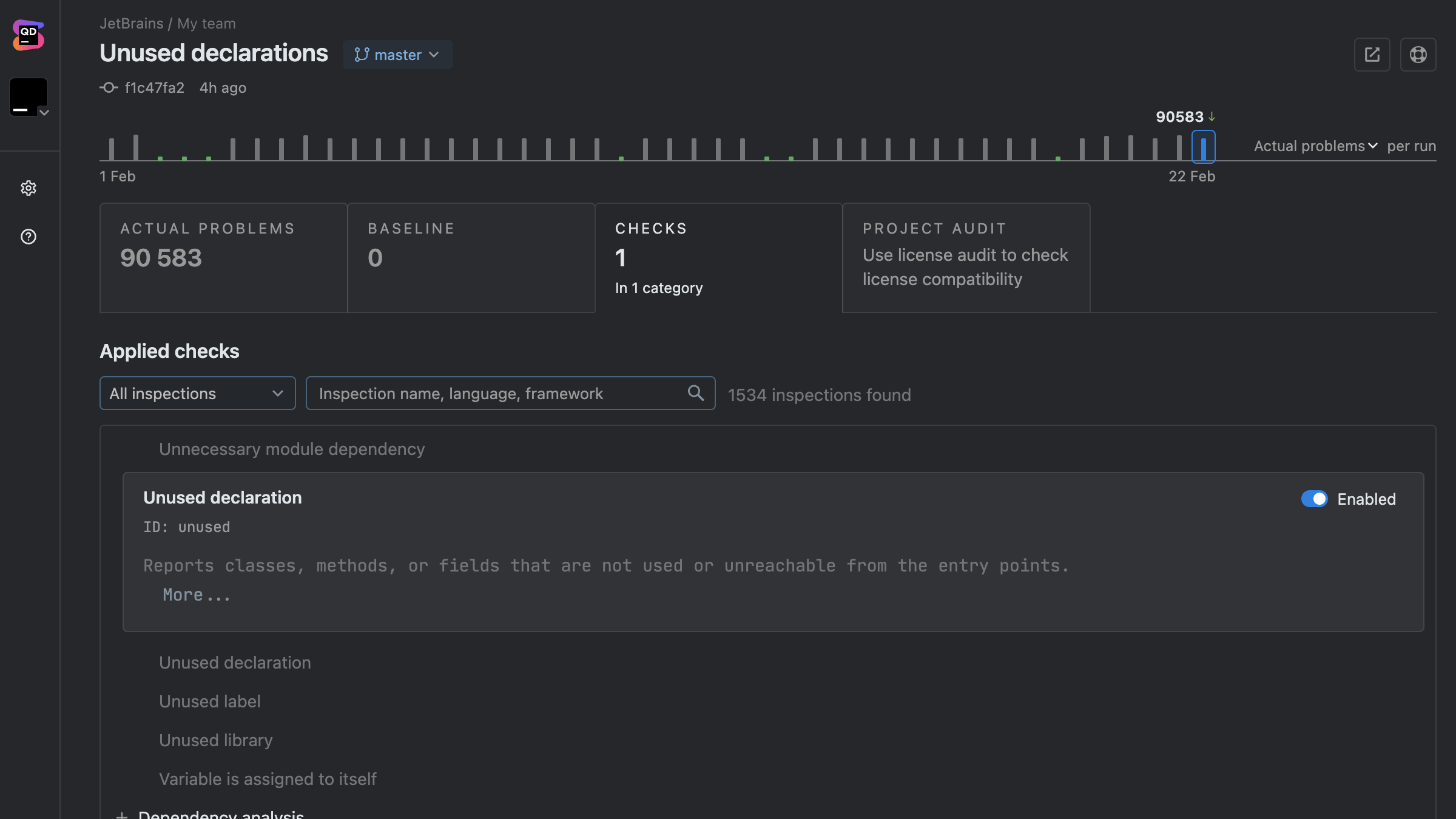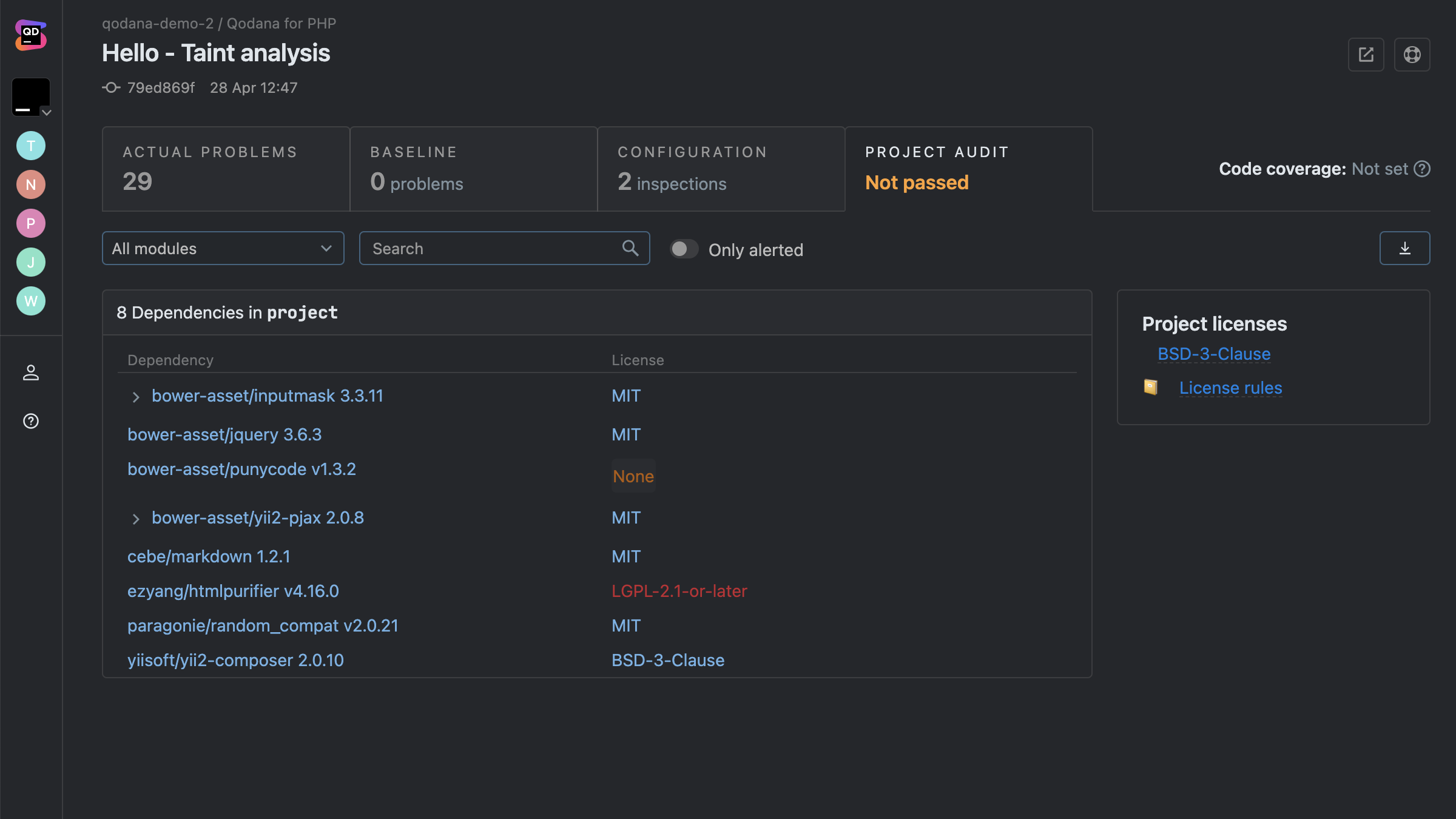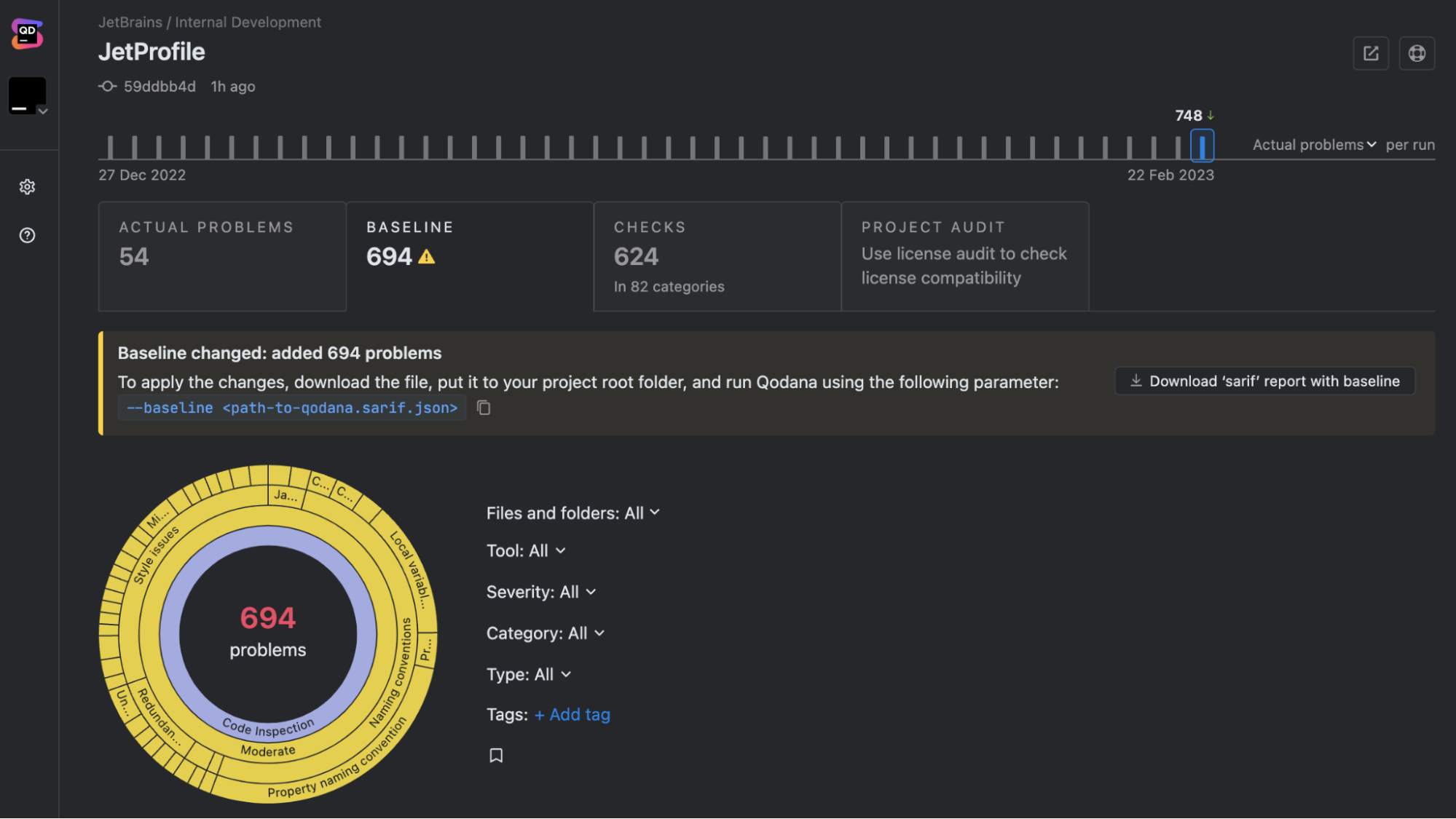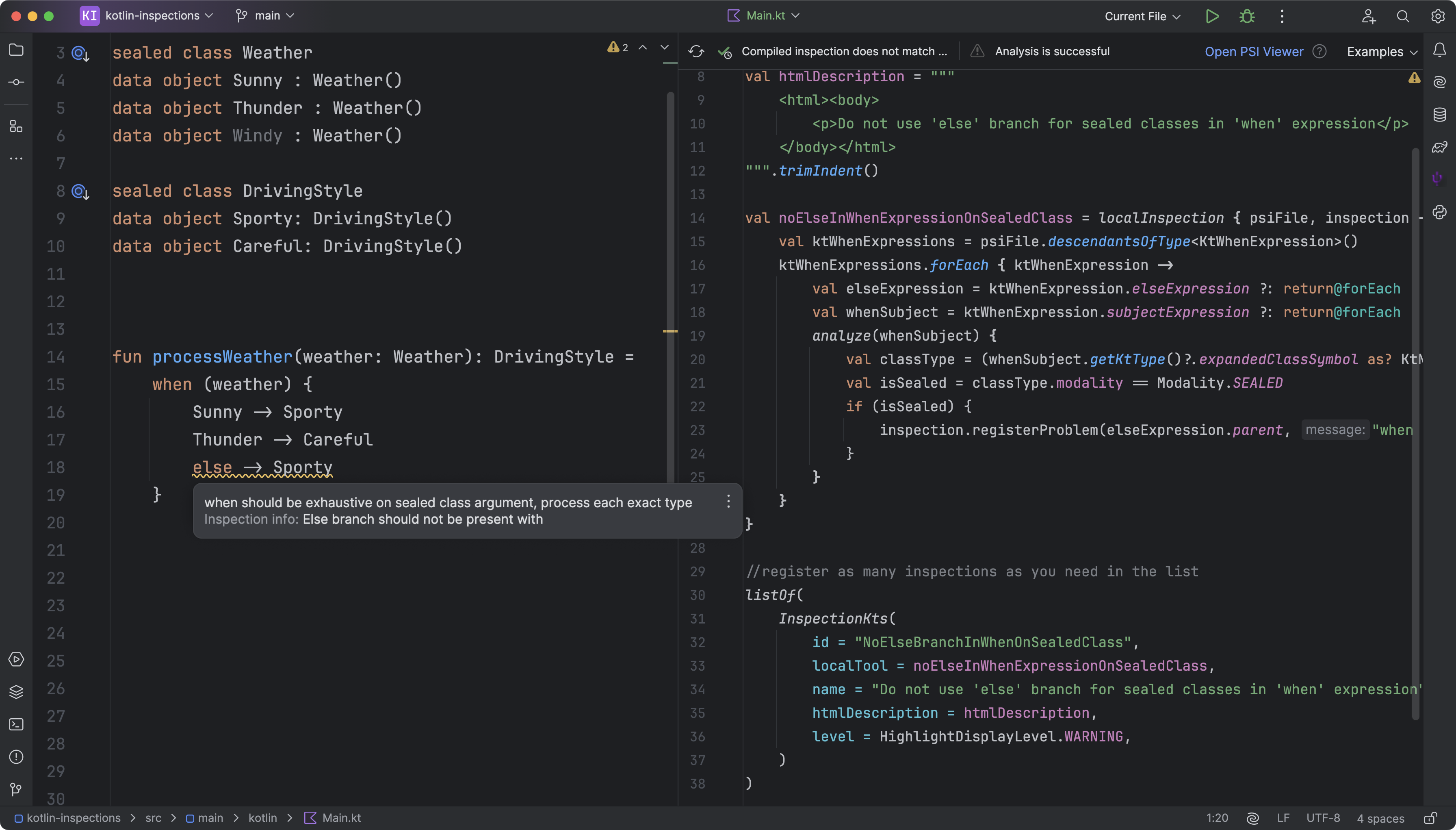Language support
Ensure the tool supports all programming languages and frameworks in your codebase. A solution optimized for Java might not be as effective for Python, and vice versa. You should also consider what language your team might want to use for future projects. In our State of Developer Ecosystem Report for 2024, 10% of respondents were planning to adopt Go. It also highlighted the growing popularity of languages such as Typescript, which has surged to 37%, up from 12% in 2017. Qodana can help you analyze projects using both of these increasingly prominent languages.
Using a tool that doesn’t fully support your project’s languages may result in missed vulnerabilities or false positives. Choosing a tool with a breadth of language support prepares you for any potential expansion in the scope of your software project. For example, Qodana can analyze code written in 60+ languages, including Java, JavaScript, TypeScript, PHP, Kotlin, Python, Go, and C#. By contrast, ESLint is specifically designed for JavaScript.
Integration
Integrating static code analysis tools directly into your CI/CD pipeline is imperative for detecting code quality issues early. It reduces the cost and effort of later-stage debugging, an example of technical debt.
A tool that can be integrated into your development team’s existing workflow can enhance developer productivity and adoption. This integration ensures your codebase is analyzed at various stages of development and upholds consistent standards for code quality and security across your entire development team.
A study titled Automatic Static Code Analysis Through CI/CD Pipeline Integration, conducted by the Institute of Electrical and Electronics Engineers (IEEE), suggests that a lack of native pipeline support has hindered the widespread adoption of static analysis tools. The study recommends integrating these tools into the developers’ familiar issue-tracking software to streamline the identification and communication of security vulnerabilities during the development lifecycle.
Actionable reports
Clear, straightforward reports help developers quickly diagnose and fix issues. The less guesswork, the better. Non-actionable or confusing reports can overwhelm developers, causing critical issues to be overlooked or improperly addressed.
For example, vague security warnings may not provide enough details for developers to act on. When specifics such as the exact vulnerability type and suggested fixes are provided, developers are less likely to waste time investigating the issues or ignore them altogether.
Actionable reports that prioritize high-risk issues are particularly important for large codebases that can generate thousands of warnings. Prioritizing issues ensures that the most critical issues are addressed ahead of minor style violations that may not have a significant impact on how the code runs.
Look for tools that generate context-rich reports with clear explanations, risk levels, and actionable recommendations.
Customization
Every project is different, so be sure to choose a tool that allows you to fine-tune rules and settings to suit your specific needs. Inflexible tools may enforce irrelevant rules, leading to unnecessary alerts and important warnings being unintentionally disregarded.
For example, a general-purpose tool might flag naming convention violations over business-critical security flaws not covered in the default ruleset. A tool without customization options may also incorrectly flag valid code, which can result in teams ignoring repeated warnings and potentially missing important security issues that need to be resolved.
Choosing a tool that allows you to adjust severity levels, define custom security rules, and suppress false positives will ensure your team has a highly relevant copilot checking their code.
Ease of use
If a tool is difficult to set up or operate, it’s likely to be ignored or underutilized. The Automatic Static Code Analysis Through CI/CD Pipeline Integration study also suggested that poor usability issues hindered the widespread adoption of static analysis tools. It found that once a static analysis tool was integrated into issue-tracking software a developer was familiar with, they were positive about its impact on their work. They cited proactive vulnerability management and real-time feedback as the biggest benefits to their workflow.
Look for intuitive interfaces that have up-to-date documentation to support the implementation of static analysis tools into your team’s workflow.
